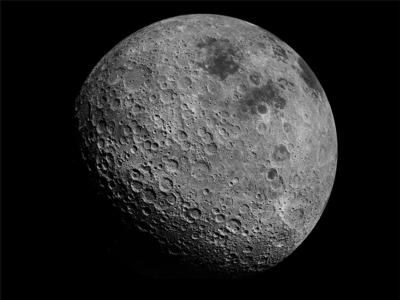I’ll See You on the Dark Side of the Moon …
Firefly Aerospace, the Cedar Park, Texas-based private aerospace firm and designer of commercial space-launch vehicles, has been selected by NASA to develop both a robotic lunar lander to deliver multiple payloads to the far side of the Moon and a communication satellite to orbit subject lunar area and relay data therefrom.

Awarded through NASA’s Commercial Lunar Payload Services (CLPS) initiative and falling under the broader heading of the agency’s Artemis program, the $112-million contract stipulates a delivery date conducive to a 2026 mission launch.
The undertaking targets a landing site on the far side of the Moon—which faces away from the Earth in perpetuity—to which the Firefly vehicle will deliver two payloads. Because it is shielded from Earth’s radio-magnetic noise, scientists consider the moon’s dark side one of the best locations in the solar system’s vast expanse for making radio observations. The data NASA hopes to ascertain must be gleaned during the lunar night—which persists for 14 Earth days.
One of payloads the Firefly lander will deliver to the lunar surface will make low-frequency astrophysics measurements of the cosmos—focusing on a time known as the Dark Ages, a cosmic era that began some 370,000 years after the Big Bang and lasted until the first stars and galaxies formed. The need for the communication satellite Firefly has been tasked to develop derives of the fact that once deposited on the lunar surface, the aforementioned payload will have no line of sight—ergo, no direct communication—with Earth.
NASA Science Mission Directorate associate administrator Nicola Fox stated: “NASA continues to look at ways to learn more about our universe. Going to the lunar far side will help scientists understand some of the fundamental physics processes that occurred during the early evolution of the universe.”
Firefly is responsible for end-to-end delivery services, including payload integration, delivery from Earth to the surface and orbit of the Moon, and NASA payload operations for the first lunar day. The award is the second Firefly has received under NASA’s CLPS initiative, the ninth surface delivery task award issued to a CLPS vendor, and the second to the moon’s dark side.

NASA’s Science Mission Directorate deputy associate administrator for exploration Joel Kearns remarked: “We look forward to Firefly providing this CLPS delivery. This lunar landing should enable new scientific discoveries from the far side of the Moon during the lunar night. This particular group of payloads should not only generate new science but should be a pathfinder for future investigations exploiting this unique vantage point in our solar system.”
The three payloads slated for delivery are expected to weigh (cumulatively) approximately 1,090 pounds (494.5 kilograms) and consist of:
- Lunar Surface Electromagnetics Experiment-Night (LuSEE-Night): A pathfinder by which NASA seeks to better understand the Moon’s radio environment and potentially take a first look at a previously unobserved era in cosmic history. The contraption will utilize deployable antennas and radio receivers for purpose of making the first ever observations of sensitive radio waves that originated in the Dark Ages. LuSEE-Night, is a collaboration between the U.S. Department of Energy’s (DOE) Brookhaven National Laboratory, the University of California, Berkeley, Space Science Laboratory, and NASA’s Science Mission Directorate. It is managed for NASA by the Planetary Missions Program Office at NASA’s Marshall Space Flight Center in Huntsville, Alabama.
- Lunar Pathfinder: A communications and data-relay satellite that will provide communication services to moon missions via S-band and UHF links to assets on the lunar surface and in orbit around the Moon as well as an X-band link to Earth. ESA’s Lunar Pathfinder is designed and developed by Surrey Satellite Technology Limited. The European Space Agency (ESA) collaborated with NASA for delivery through the CLPS initiative.
- User Terminal (UT): A payload that will institute a new standard for S-Band Proximity-1 space communication protocol and establish space heritage. UT will be used to commission the Lunar Pathfinder and ensure the latter’s readiness to provide communications service to LuSEE-Night. UT consists of software-defined radio, an antenna, a network switch, and a sample data source. UT is in development by NASA’s Jet Propulsion Laboratory in Southern California.
 ANN's Daily Aero-Term (04.25.24): Airport Rotating Beacon
ANN's Daily Aero-Term (04.25.24): Airport Rotating Beacon ANN's Daily Aero-Linx (04.25.24)
ANN's Daily Aero-Linx (04.25.24) Klyde Morris (04.22.24)
Klyde Morris (04.22.24) Airborne 04.24.24: INTEGRAL E, Elixir USA, M700 RVSM
Airborne 04.24.24: INTEGRAL E, Elixir USA, M700 RVSM Airborne 04.22.24: Rotor X Worsens, Airport Fees 4 FNB?, USMC Drone Pilot
Airborne 04.22.24: Rotor X Worsens, Airport Fees 4 FNB?, USMC Drone Pilot




